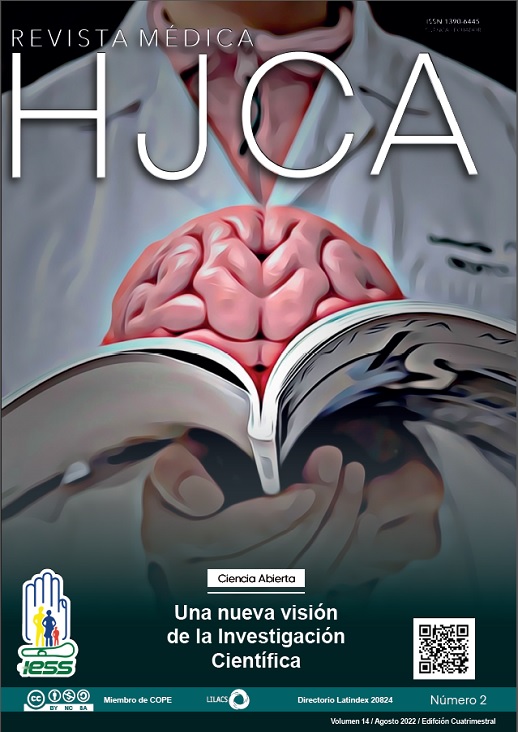Síndrome de superposición entre Esclerosis Sistémica y Lupus Eritematoso Sistémico: A propósito de un caso
Overlap Syndrome between Systemic Sclerosis and Systemic Lupus Erythematosos: A case report
Palabras clave:
LUPUS ERITEMATOSO SISTÉMICO, ESCLEROSIS SISTEMICA, ENFERMEDADES AUTOINMUNES, ANTICUERPOS ANTINUCLEARES, SYSTEMIC LUPUS ERYTHEMATOSUS, SYSTEMIC SCLEROSIS, AUTOIMMUNE DISEASES, ANTINUCLEAR ANTIBODIESResumen
INTRODUCCIÓN: En cuanto a enfermedades autoinmunes, un síndrome de superposición u “Overlap” es definido como aquel que cumple con criterios de inclusión satisfactorios para dos enfermedades del tejido conectivo distintas al mismo tiempo. Él LES es una de las patologías autoinmunes más conocidas y estudiadas, es conocida su superposición con otras enfermedades autoinmunes, siendo una de las menos frecuentes su asociación con ES. A continuación, presentamos un caso de superposición entre ES-LES, que fue diagnosticado muchos años luego del inicio de los síntomas.
CASO CLÍNICO: Paciente de sexo femenino de 45 años, con diagnóstico hace 14 años de Síndrome de Sjogren y Síndrome de Raynaud, sin tratamiento actual. Acudió para recibir atención médica por cuadro de astenia, sensación de falta de aire, eritema en dedos de pies, dolor articular en articulaciones interfalángicas distales de ambas manos y lesiones en uñas de mano. Tras valorar cuadro clínico y con ayuda de los exámenes complementarios, se descartó síndrome mixto de tejido conectivo. El paciente cumplía los criterios diagnósticos para LES (criterios ACR/EULAR 2019) y para ES (criterios ACR/EULAR 2013).
EVOLUCIÓN: Tras confirmar diagnóstico de Síndrome de Superposición LES-ES se inició tratamiento específico con fármacos inmunosupresores, al cual la paciente respondió favorablemente, con mejoría progresiva de su sintomatología, así como mejoría en los parámetros clínicos de laboratorio.
CONCLUSIÓN: Los síndromes de superposición, como el de ES-LES, son enfermedades poco descritas, cuya sospecha diagnóstica deberá basarse en la clínica compatible con las dos enfermedades de manera simultánea y deberá confirmase con estudios de determinación de anticuerpos y otros exámenes complementarios de apoyo. El manejo irá guiado según el cuadro clínico específico del paciente y el pronóstico dependerá más que de la asociación de enfermedades, de la gravedad de las mismas.
ABSTRACT
Overlap Syndrome between Systemic Sclerosis and Systemic Lupus Erythematosos: A case report.
BACKGROUND: Regarding autoimmune diseases, an overlap syndrome is defined as one that meets satisfactory inclusion criteria for two different connective tissue diseases at the same time. SLE is one of the most well-known and studied autoimmune pathologies, its overlap with other autoimmune diseases is known, being one of the least frequent its association with Systemic Sclerosis (SS). Here we present a case of SLE-SS overlap, which was diagnosed many years after the onset of symptoms.
CASE REPORT: A 45-year-old female patient, diagnosed 14 years ago with Sjogren's Syndrome and Raynaud's Syndrome, without current treatment. She came to receive medical attention due to asthenia, a feeling of shortness of breath, erythema in the toes, joint pain in the distal interphalangeal joints of both hands, and lesions in the fingernails. After assessing the clinical features and with the help of complementary tests, mixed connective tissue syndrome was ruled out. The patient met the diagnostic criteria for SLE (2019 ACR/EULAR criteria) and SS (2013 ACR/EULAR criteria).
EVOLUTION: After confirming the diagnosis of SLE-ES Overlap Syndrome, specific treatment with immunosuppressive drugs was started, to which the patient responded favorably, with progressive improvement of her symptoms, as well as improvement in clinical laboratory parameters.
CONCLUSION: Overlapping syndromes, such as ES-SLE, are rarely poorly diseases; the diagnostic suspicion should be based on symptoms compatible with both diseases simultaneously and should be confirmed by antibody determination and supported with other complementary tests. Management will be guided by the specific clinical features of the patient and the prognosis will depend on the severity of the diseases, more than on the association of them.
Descargas
Publicado
Versiones
- 2022-12-21 (2)
- 2022-08-30 (1)

